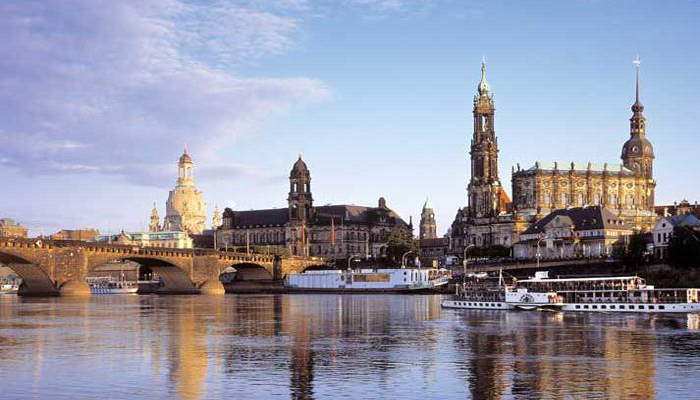
Dresden & Wackerbarth Castle
Germany is a land of many gems and Saxony is undoubtedly the hidden treasure of Germany.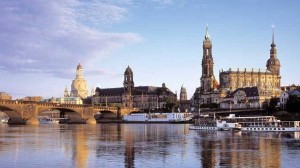
Last September, I had the opportunity to visit Germany’s No 1 Cultural Destination Saxony. After arriving at Berlin airport we boarded our coach to head to the South East corner and the capital of Saxony, Dresden. Dresden is located to the south of Berlin and it takes under 2 hours to cover the distance of 165 kilometres on the Autobahn between the two cities.
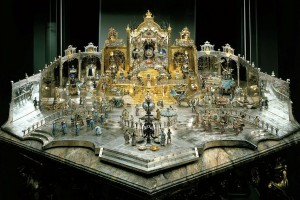
Saxony, the art and cultural capital of Germany lies on the South East corner and borders the Czech Republic and Poland. Our first halten route was at Pillnitz Castle Gardens,the summer residence of the Saxon Kings near Dresden. Pillnitz was built at the end of the 18th century.Before Dresden became a centre of research, industry and tourism, it was the seat of the royal residence and being royalty, they had several castles. Pillnitz was built in Japanese style and was the closest castle to Dresden with the exception of the city castle.
The city castle used to be the winter residence of the royalties. Originally there was a Renaissance Castle in Pillnitzwhich was later in the possession of Countess Cosel, the most famous mistress of Augustus the Strong. She started redoing the castle in Baroque style with the help of the famous architect Matthäus Daniel Pöpellmann who was also responsible for rebuilding Dresden after the fire of 1685. You can arrive at the Pillnitz Castle and gardens in one of the Elbe Steamboats as well.
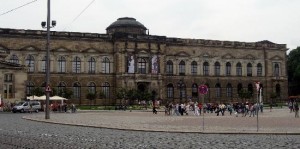
We took a steam boat ride to the capital of Saxony also known as the Florence on the Elbe – Dresden.
Dresden was one of Europe’s most beautiful cities until 1945 when the Allied bombers turned this city into a pile of rubble. The city which celebrated its 800th anniversary in 2006 is probably a much older city as the first settlers came from places in Eastern Europe like Russia, Poland,Czech Republic settling on the banks of the river Elbe and speakingSlavic language. Over the years this place grew from obscurity to what it is today, probably the richest in Germany in terms of art, culture, history, architecture, music, shopping, gold, wine and fine gastronomy.
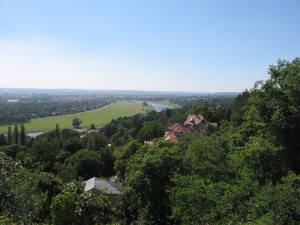
The most inspiring Saxon was Augustus the Strong and you can find his statue as you arrive into Dresden from the Elbe River. After World War II, Dresden was completely destroyed and this was followed by Communist rule before being reunited with Germany.
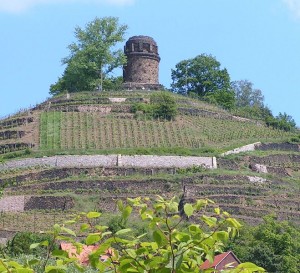
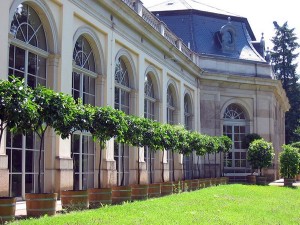
As you walk near the theatre square, you see the imposing Semperoper or the Semper Opera House, later a Baroque building in Germany and one of the world’s best opera houses where Zubin Mehta has also performed on several occasions.
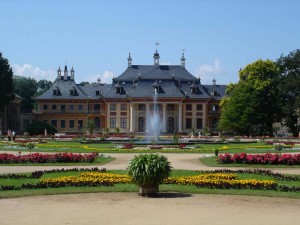
The Dresden Zwinger is yet another famous landmark comprising of pavilions and galleries in baroque style and was commissioned by Augustus the Strong, the elector of Saxony. Zwinger which means interspace originates from its location between former city fortifications and today, houses several museums such as the Porcelain Museum, the Old Master’s Gallery and the Historical Museum. One of the highlights of the Zwinger is the Crown Gate, a baroque gate topped by a large crown and the Nymphenbad, a small enclosed courtyard near the Rampart pavilion which has a baroque fountain featuring numerous statues.
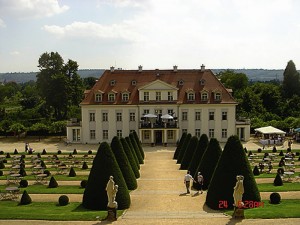
Another interesting area of the city centre is Neumarkt which stands for New Marketand ismisunderstood as a market place. Here in Germany, it is the name of the square and is a culturally significant section of the inner city of Dresden. The Neumarkt, like most of Dresden was destroyed during WW II and was rebuilt to its original pre-war look.
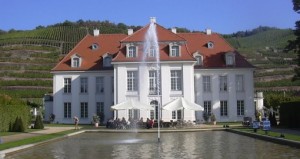
Amongst the other Baroque masterpieces in Dresden are the Taschenberg Palace and the Dresden Cathedral.
Later in the day we had the opportunity to visit the Green Vault- Europe’s most important treasury museum – Originally the private collection of Augustus the Strong. The original “Green Vault” too was destroyed during WWII and later rebuilt. Here you can find the most important pieces of art including the “Court of Aurangzeb”- a masterpiece of the Dinglinger family of jewellers. This amazing work took as long as 7 years to build; and costs as much as the famous Moritzburg Castle of Saxony.
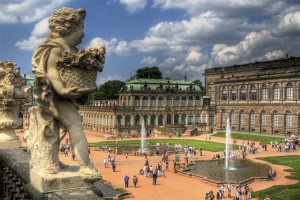
Radebeul, situated on the foot of the Loessnitz vineyards, seven kms. away from the city of Dresden is an ideal location for trips to Moritzburg Castle, the porcelain city of Meissen and Saxon Switzerland, one of the most unique landscapes in Germany. It is also on the Saxon Wine Route which runs from Pirna, located to the south of Dresden uptoDiessbar-Seusslitz, a village to the north of Meissen. Nearby we had the opportunity to visit one of the most amazing vineyards of Saxony – the SchlossWackerbarth or the Wackerbarth Castle.
The Wackerbarth Castle, nestled in the town of Radebeul houses Saxony’s oldest sparkling wine (Sekt) producing facility. It is Europe’s first vineyard to allow guests to discover and experience the world of wine first-hand.
For those who love Indian food there is ‘Kamasutra’, one amongst several Indian restaurants that you can find in Dresden which claims to be the first in continental Europe to offer authentic Indian food. There is also Maharadscha, another Indian restaurant, which claims to be the first Indian restaurant in Dresden. So I wonder who was first.There are several Indian restaurants in Dresden amongst varied cuisines from across the world.
There were lots of exciting places in store for us to visit in Saxony. The following day started with a visit to Saxon Switzerland.



